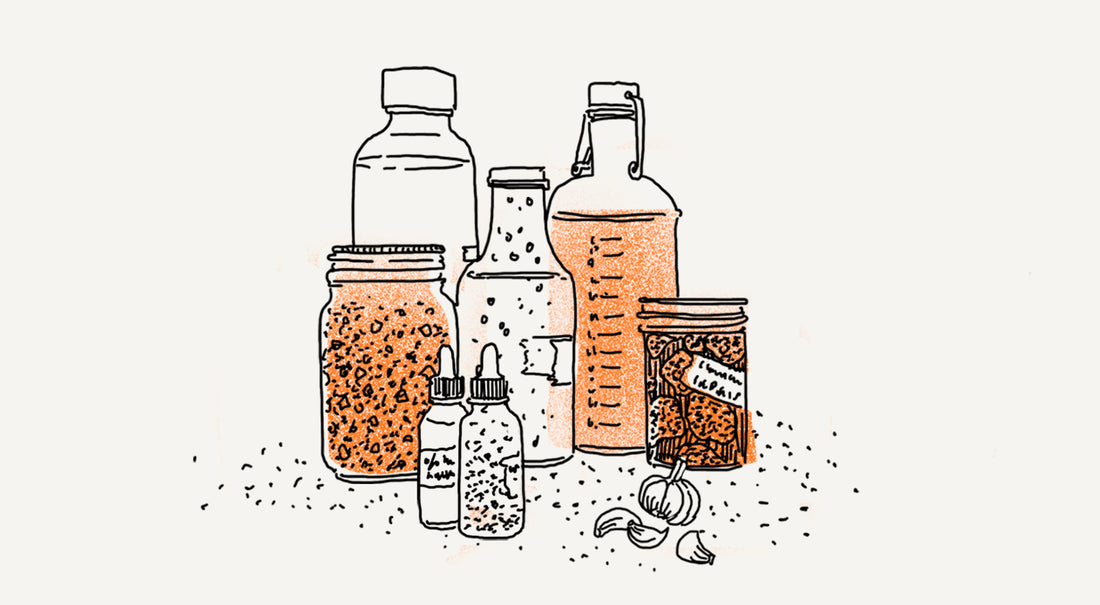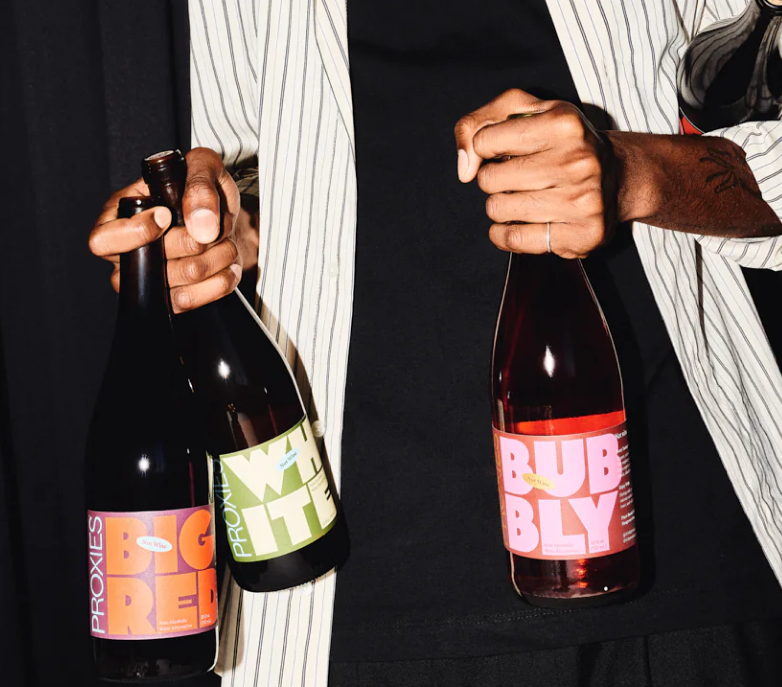
Spotlight on Vinegar Fermentation
Share
Words by Cole Pearsall | Art by Reena Mistry
Acid League serves at the whim of bacteria. We thought we ran our own lab, but as we set out on our quest to make great vinegar, we soon realized we were welcoming countless new, near-invisible friends to the team. We had to figure out what they like to eat, what temperature they thrive in, and how humid they like the air. We had to nurture the relationship and learn to work together. We call Acetic Acid Bacteria (AAB, for short) our microbial allies, our partners, our friends, but the truth is they run the show.
People seem to form their whole identity around loving cheese, wine, or beer, but vinegar enthusiasts are few and far between. Maybe we just don’t like feeling so alone, but we often wonder where all the other groupies for this sour solution are hiding. If beer and wine are the vocals and lead guitar, with cheese on the drums, vinegar has for too long humbly plucked the bass in the back. Our goal is to bring vinegar out of the dark and into the spotlight. We want you to understand the vinegar fermentation process, and we want you to understand how it impacts flavor. We want you to see that vinegar can be delicious.
All vinegar is made through a two-step progression—primary and secondary fermentation. First, yeasts transform the sugars within a liquid (like juice, beer mash, or rice water) into alcohol. This is why red and white wine vinegar, rice wine vinegar, and apple cider vinegar are mainstays of the grocery aisle. Once there is an alcoholic mixture present, our mighty companions, AAB, enter the party.
Alcohol + AAB + Oxygen → Vinegar
AAB is a widely encountered species of obligate aerobic bacteria (microorganisms that need oxygen to grow), and they have a strong appetite for alcohol. When AAB feeds on alcohol in an oxygenated environment, the by-product is acetic acid, which gives vinegar its distinct tang.
Zooming out from the microbiological world, choosing the right kind of alcohol to feed our bacterial partners is critical in making delicious vinegars. That’s why we experimented with hundreds of combinations, with extremely varied results. We tried to hack the deep and complex profiles of balsamic—traditionally developed over years of aging—by combining sweet and umami-rich ingredients and fermenting them for our alcoholic base. Bubbling vessels of dried apricot and soy sauce, dates and miso paste, and more occupied the benchtops of our laboratory. We even fermented caramelized onion and garlic into wine, but let’s just say not all ideas are good ideas. Fortunately, we also found some combinations that make our whole team—bacteria through humans—considerably happier.

With the alcohol carefully chosen, secondary fermentation into vinegar begins. Our vinegar-making ancestors relied on a slow, passive process, exposing the alcoholic solution to air and waiting for it to slowly acidify thanks to AAB found naturally in the wild. Alternatively, this relaxed transformation could be kickstarted by introducing a healthy population of active living bacteria in the form of ‘vinegar mother’—a substance composed of a biofilm of cellulose and living AAB (best described as a jello-like disc or small slime globules that you may have noticed floating in organic apple cider vinegar jars). But even with the addition of a mother, it’s a long wait as the bacteria feed and calmly deplete their alcoholic food source over time. As the alcoholic concentration drops, the acetic acid increases, and eventually you have vinegar. Unless you have more than a few dollars to spend on vinegar, it’s likely that you’ve never tasted the nuances of a true slow fermentation process.
Vinegar found at the grocery store is produced far more quickly. Industrial vinegar makers create an environment that is extremely favorable for AAB growth, reducing fermentation time from as much as three months to as little as one day. These AAB thrive and grow their colonies with tremendous fortitude, easily out-competing any other microbe looking to invade their sour territory. Acetic acid is created almost instantly, but that’s about it. There’s no chance for other flavors to develop. It’s clean, consistent, and often boring.
But there is another path. At Acid League, we developed our own technology that lets us reap the benefits of the traditional, slow process but with greater efficiency and consistency. We can make vinegars with more flavor compounds, and more depth without waiting years like with traditional balsamic. And because we move faster than the traditional process but not nearly as fast as the industrial method, our vinegars retain the taste of the original fruit, vegetable, or grain. By developing this new in-between path, our AAB allies don’t erase all other flavors like in the industrial process. Instead, they’re true collaborators. They co-exist with other microbes and allow deeper flavor to develop. They help us create vinegar that’s clean and complex all at once.
In her celebrated book, Salt, Fat, Acid, Heat, Samin Nosrat writes, “on its own, acid isn’t particularly gratifying. It’s the way acid contrasts with other tastes that heightens our pleasure in foods.” But our acid does that and more. With a little help from our bacterial collaborators, we’re constantly seeking to push the boundaries of what vinegar can be. Acid League vinegars have enough acidity to cut through a fatty dish with sharp precision, but there’s flavor here too.
Vinegar that’s worthy of the spotlight.
A version of this article originally appeared in Acid League Magazine Volume 1.





